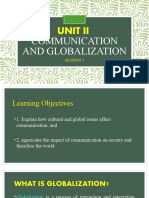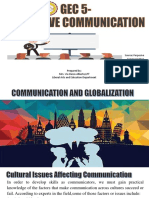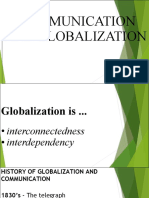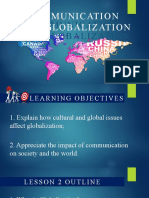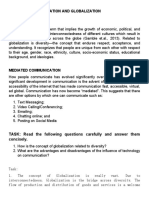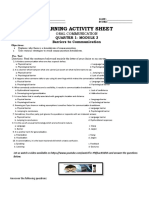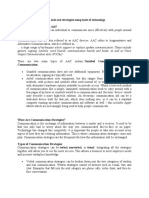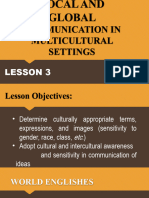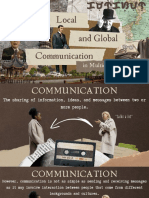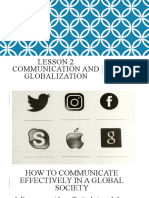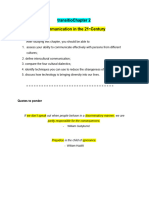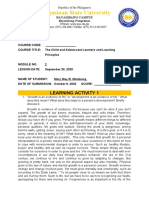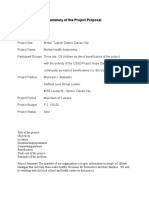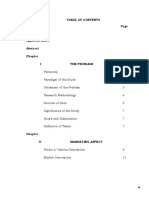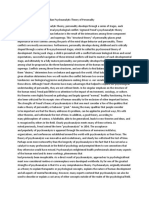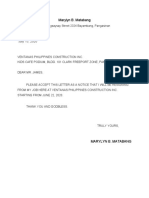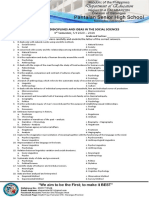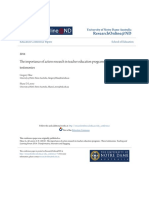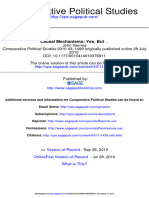0% found this document useful (0 votes)
588 views39 pagesGlobalization & Cultural Dynamics
Globalization and advances in technology have interconnected the world and made it a global village. Communication and the exchange of ideas now occur across borders due to improved transportation systems and technology. The document discusses globalization and how it has integrated cultures economically, politically, and culturally. It provides examples of how multinational companies and global media have spread across the world. The document also discusses cultural differences between high-context and low-context cultures, as well as differences in individualism, masculinity, and power distance. It stresses the importance of developing intercultural competence to communicate effectively across cultures.
Uploaded by
Mary MAy MatabangCopyright
© © All Rights Reserved
We take content rights seriously. If you suspect this is your content, claim it here.
Available Formats
Download as PPTX, PDF, TXT or read online on Scribd
0% found this document useful (0 votes)
588 views39 pagesGlobalization & Cultural Dynamics
Globalization and advances in technology have interconnected the world and made it a global village. Communication and the exchange of ideas now occur across borders due to improved transportation systems and technology. The document discusses globalization and how it has integrated cultures economically, politically, and culturally. It provides examples of how multinational companies and global media have spread across the world. The document also discusses cultural differences between high-context and low-context cultures, as well as differences in individualism, masculinity, and power distance. It stresses the importance of developing intercultural competence to communicate effectively across cultures.
Uploaded by
Mary MAy MatabangCopyright
© © All Rights Reserved
We take content rights seriously. If you suspect this is your content, claim it here.
Available Formats
Download as PPTX, PDF, TXT or read online on Scribd
/ 39

